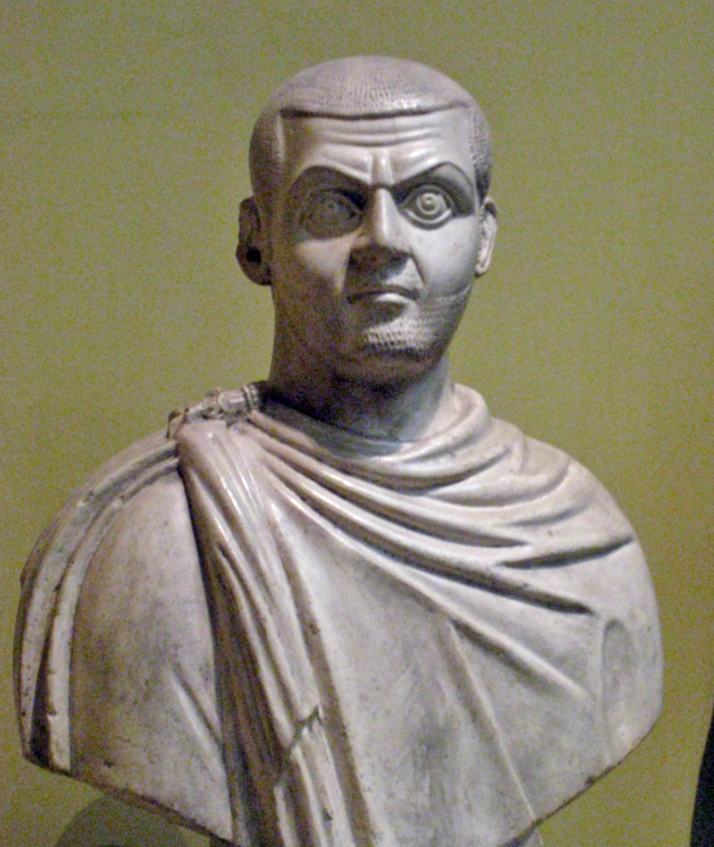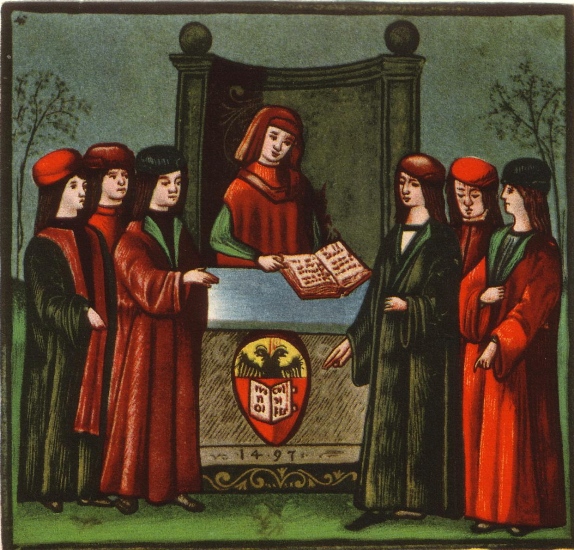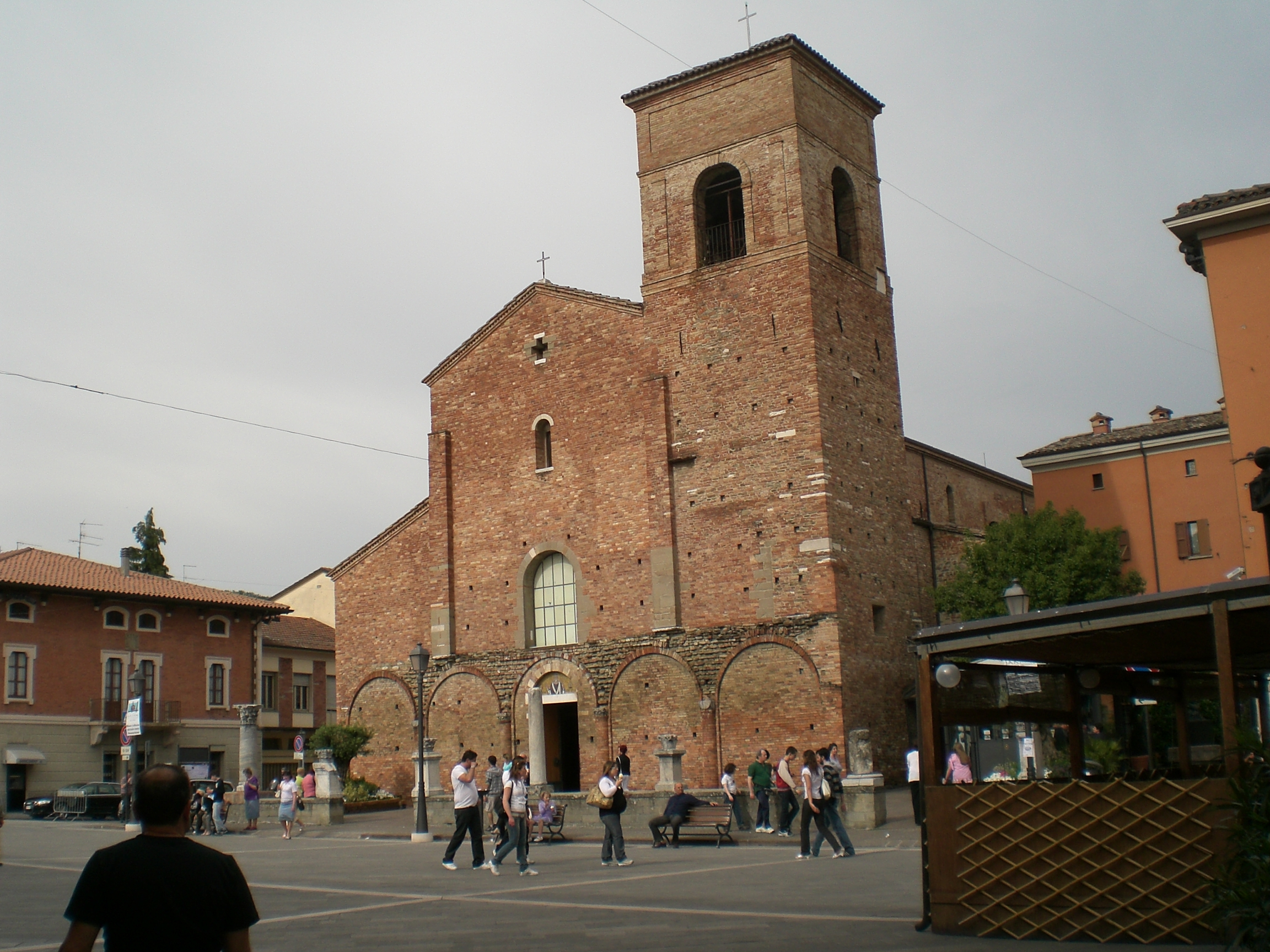|
Vicinius Of Sarsina
Saint Vicinius or Saint Vicinius of Sarsina ( it, San Vicinio di Sarsina; died 330) was the first bishop of Sarsina and is venerated as a Roman Catholic saint. Hagiography Vicinius's life is based on notes in an anonymous manuscript lectionary of the 12th century. Vicinius, traditionally the first bishop of Sarsina, is supposed to have been a native of Liguria. Shortly before the great persecutions of Diocletian and Maximinus II, he withdrew as a hermit to a mountain about six kilometres from Sarsina which is now named after him (Monte San Vicinio, in the present commune of Mercato Saraceno). Here he followed a life of prayer and penitence. While the priests and people of Sarsina were assembled to choose a bishop, a divine sign appeared over the mountain top. In this way the solitary Vicinius was appointed bishop, from the beginning of the fourth century (about 303) to his death in 330. Even after his election Vicinius periodically withdrew to the mountains in solitary retreat ... [...More Info...] [...Related Items...] OR: [Wikipedia] [Google] [Baidu] |
Bishop Of Sarsina
The Catholic diocese of Sarsina (''Sassina, Saxena, Bobium'') was a Roman Catholic ecclesiastical territory in Emilia-Romagna, northern Italy, seated in Sarsina, in the province of Forlì, some 32 km south-southwest of Cesena. The diocese was founded in the 5th century, and was suffragan (subordinate) to the archbishop of Ravenna. The diocese existed until 1986, when it was united with the diocese of Cesena."Diocese of Sarsina" ''''. David M. Cheney. Retrieved October 7, 2016."Diocese of Sarsina" [...More Info...] [...Related Items...] OR: [Wikipedia] [Google] [Baidu] |
Roman Catholic
Roman or Romans most often refers to: *Rome, the capital city of Italy *Ancient Rome, Roman civilization from 8th century BC to 5th century AD *Roman people, the people of ancient Rome *'' Epistle to the Romans'', shortened to ''Romans'', a letter in the New Testament of the Christian Bible Roman or Romans may also refer to: Arts and entertainment Music * Romans (band), a Japanese pop group * ''Roman'' (album), by Sound Horizon, 2006 * ''Roman'' (EP), by Teen Top, 2011 *" Roman (My Dear Boy)", a 2004 single by Morning Musume Film and television * Film Roman, an American animation studio * ''Roman'' (film), a 2006 American suspense-horror film * ''Romans'' (2013 film), an Indian Malayalam comedy film * ''Romans'' (2017 film), a British drama film * ''The Romans'' (''Doctor Who''), a serial in British TV series People *Roman (given name), a given name, including a list of people and fictional characters *Roman (surname), including a list of people named Roman or Romans *Ῥωμ� ... [...More Info...] [...Related Items...] OR: [Wikipedia] [Google] [Baidu] |
Lectionary
A lectionary ( la, lectionarium) is a book or listing that contains a collection of scripture readings appointed for Christianity, Christian or Judaic worship on a given day or occasion. There are sub-types such as a "gospel lectionary" or evangeliary, and an :wikt:epistolary, epistolary with the readings from the New Testament Epistles. History The Talmud claims that the practice of reading appointed Scriptures on given days or occasions dates back to the time of Moses and began with the annual religious festivals of Passover, Pentecost, and the Feast of Tabernacles (Talmud, ''Megilah 32a''). The Mishnah portion of the Talmud, probably finished in the early 3rd century AD/CE (''Anno'' ''Domini'' or Common Era) contains a list of Torah readings for various occasions (Talmud, ''Megilah 32a'') and assumes that these special readings interrupt a regular schedule of Torah readings (Talmud, ''Megilah 29a, 30b''). In addition to these Torah readings, the later Gemara portion of the Ta ... [...More Info...] [...Related Items...] OR: [Wikipedia] [Google] [Baidu] |
Liguria
Liguria (; lij, Ligûria ; french: Ligurie) is a Regions of Italy, region of north-western Italy; its Capital city, capital is Genoa. Its territory is crossed by the Alps and the Apennine Mountains, Apennines Mountain chain, mountain range and is roughly coextensive with the former territory of the Republic of Genoa. Liguria is bordered by France (Provence-Alpes-Côte d'Azur) to the west, Piedmont to the north, and Emilia-Romagna and Tuscany to the east. It rests on the Ligurian Sea, and has a population of 1,557,533. The region is part of the Alps–Mediterranean Euroregion. Etymology The name ''Liguria'' predates Latin and is of obscure origin. The Latin adjectives (as in ) and ''Liguscus'' reveal the original root of the name, ''ligusc-'': in the Latin name -sc- was shortened to -s-, and later turned into the -r- of , according to rhotacism (sound change), rhotacism. Compare grc, λίγυς, translit=Lígus, translation=a Ligurian, a person from Liguria whence . The name de ... [...More Info...] [...Related Items...] OR: [Wikipedia] [Google] [Baidu] |
Diocletianic Persecution
The Diocletianic or Great Persecution was the last and most severe persecution of Christians in the Roman Empire. In 303, the emperors Diocletian, Maximian, Galerius, and Constantius issued a series of edicts rescinding Christians' legal rights and demanding that they comply with traditional religious practices. Later edicts targeted the clergy and demanded universal sacrifice, ordering all inhabitants to sacrifice to the gods. The persecution varied in intensity across the empire—weakest in Gaul and Britain, where only the first edict was applied, and strongest in the Eastern provinces. Persecutory laws were nullified by different emperors (Galerius with the Edict of Serdica in 311) at different times, but Constantine and Licinius' Edict of Milan in 313 has traditionally marked the end of the persecution. Christians had been subject to intermittent local discrimination in the empire, but emperors prior to Diocletian were reluctant to issue general laws against the religio ... [...More Info...] [...Related Items...] OR: [Wikipedia] [Google] [Baidu] |
Maximinus II
Galerius Valerius Maximinus, born as Daza (20 November 270 – July 313), was Roman emperor from 310 to 313 CE. He became embroiled in the Civil wars of the Tetrarchy between rival claimants for control of the empire, in which he was defeated by Licinius. A committed pagan, he engaged in one of the last persecutions of Christians, before issuing an edict of tolerance near his death. Name The emperor Maximinus was originally called Daza, a common name in Illyria, where he was born. The form "Daia" given by the Christian pamphleteer Lactantius, an important source on the emperor's life, is considered a misspelling and deprecated. He acquired the name Maximinus at the request of his maternal uncle, Galerius, and his full name as emperor was Galerius Valerius Maximinus. Modern scholarship often refers to him as Maximinus Daza, though this particular form is not attested by epigraphic or literary evidence. Early career He was born in the Roman Illyria region to the sister of em ... [...More Info...] [...Related Items...] OR: [Wikipedia] [Google] [Baidu] |
Sarsina
Sarsina ( rgn, Sêrsna) is an Italian town situated in the province of Forlì-Cesena, Emilia-Romagna, northern Italy. Its territory is included in the Tuscan-Romagnolo Apennines. History Ancient Sarsina or Sassina was a town of the Umbri. Captured by Cornelius Scipio in 271 BC, it became later a ''municipium'' of the Roman empire. In 266 BC Roman ''consuls'' celebrated a triumph over the Sassinates. It is mentioned in the ''Fasti'', and in the enumeration of the Italian allies of the Romans in 225 BCE the Umbri and ''Sassinates'' are mentioned, on an equal footing, as providing 20,000 men between them. It is possible that the ''tribus Sapinia'' (the name of which is derived from the river Sapis) mentioned by Livy in the account of the Roman marches against the Boii in 201 BC and 196 BC formed a part of the Sassinates. The playwright Plautus was native of Sassina. The town had a strategic importance, as inscriptions, preserved in the local museum, show. Its milk is frequently ... [...More Info...] [...Related Items...] OR: [Wikipedia] [Google] [Baidu] |
Mercato Saraceno
Mercato Saraceno ( rgn, Marchèt Sarasèin) is a ''comune'' (municipality) in the Province of Forlì-Cesena in the Italian region Emilia-Romagna, located about southeast of Bologna and about southeast of Forlì. Mercato Saraceno borders the following municipalities: Bagno di Romagna, Cesena, Novafeltria, Roncofreddo, Sarsina, Sogliano al Rubicone, Talamello. Arnaldo Mussolini (1885-1931), brother of Italian dictator Benito Mussolini, is buried here. Twin towns Mercato Saraceno is twinned with: * Villadossola Villadossola (Piedmontese ''Vila d'Òssola'') is a town and ''comune'' of the Val d’Ossola in the Province of Verbano-Cusio-Ossola, Piedmont, northern Italy, some northeast of Turin. It stands just south of Domodossola, to the west of the Toce ..., Italy, since 2010 References External links Official website Cities and towns in Emilia-Romagna {{EmiliaRomagna-geo-stub ... [...More Info...] [...Related Items...] OR: [Wikipedia] [Google] [Baidu] |
University Of Bologna
The University of Bologna ( it, Alma Mater Studiorum – Università di Bologna, UNIBO) is a public research university in Bologna, Italy. Founded in 1088 by an organised guild of students (''studiorum''), it is the oldest university in continuous operation in the world, and the first degree-awarding institution of higher learning. At its foundation, the word ''universitas'' was first coined.Hunt Janin: "The university in medieval life, 1179–1499", McFarland, 2008, , p. 55f.de Ridder-Symoens, Hilde''A History of the University in Europe: Volume 1, Universities in the Middle Ages'' Cambridge University Press, 1992, , pp. 47–55 With over 90,000 students, it is the second largest university in Italy after La Sapienza in Rome. It was the first place of study to use the term ''universitas'' for the corporations of students and masters, which came to define the institution (especially its law school) located in Bologna. The university's emblem carries the motto, ''Alma Mater Studio ... [...More Info...] [...Related Items...] OR: [Wikipedia] [Google] [Baidu] |
Sarsina Cathedral
Sarsina Cathedral ( it, Duomo di Sarsina; Basilica Concattedrale di Santa Maria Annunziata) is a Roman Catholic cathedral in Sarsina, a municipality in the province of Forlì-Cesena, region of Emilia-Romagna, Italy, dedicated to the Annunciation of the Virgin Mary. Formerly the seat of the Bishops of Sarsina, since 1986 it has been a co-cathedral of the Diocese of Cesena-Sarsina. History This church likely dates to the 10th century, when a Romanesque architecture, Romanesque structure in brick was begun. The lunette above the entrance portal has a modern mosaic depicting Saint Vicinius wearing a bishop's mitre and holding a chain. The façade remains unfinished. The interior nave is generally austere. Chapels added to the lateral aisles, include a chapel (1693) dedicated to the ''Virgin of the Rosary'' with a 17th-century altarpiece with 14 small paintings depicting the ''Mysteries of the Rosary''. On the left nave is also the chapel of the Sacrament (1555), with a Renaissance-sty ... [...More Info...] [...Related Items...] OR: [Wikipedia] [Google] [Baidu] |
Relics
In religion, a relic is an object or article of religious significance from the past. It usually consists of the physical remains of a saint or the personal effects of the saint or venerated person preserved for purposes of veneration as a tangible memorial. Relics are an important aspect of some forms of Buddhism, Christianity, Islam, shamanism, and many other religions. ''Relic'' derives from the Latin ''reliquiae'', meaning "remains", and a form of the Latin verb ''relinquere'', to "leave behind, or abandon". A reliquary is a shrine that houses one or more religious relics. In classical antiquity In ancient Greece, a city or sanctuary might claim to possess, without necessarily displaying, the remains of a venerated hero as a part of a hero cult. Other venerable objects associated with the hero were more likely to be on display in sanctuaries, such as spears, shields, or other weaponry; chariots, ships or figureheads; furniture such as chairs or tripods; and clothing. Th ... [...More Info...] [...Related Items...] OR: [Wikipedia] [Google] [Baidu] |
Bishops In Emilia-Romagna
A bishop is an ordained clergy member who is entrusted with a position of authority and oversight in a religious institution. In Christianity, bishops are normally responsible for the governance of dioceses. The role or office of bishop is called episcopacy. Organizationally, several Christian denominations utilize ecclesiastical structures that call for the position of bishops, while other denominations have dispensed with this office, seeing it as a symbol of power. Bishops have also exercised political authority. Traditionally, bishops claim apostolic succession, a direct historical lineage dating back to the original Twelve Apostles or Saint Paul. The bishops are by doctrine understood as those who possess the full priesthood given by Jesus Christ, and therefore may ordain other clergy, including other bishops. A person ordained as a deacon, priest (i.e. presbyter), and then bishop is understood to hold the fullness of the ministerial priesthood, given responsibility by ... [...More Info...] [...Related Items...] OR: [Wikipedia] [Google] [Baidu] |


_-_Foto_G._Dall'Orto_28-5-2006.jpg)




